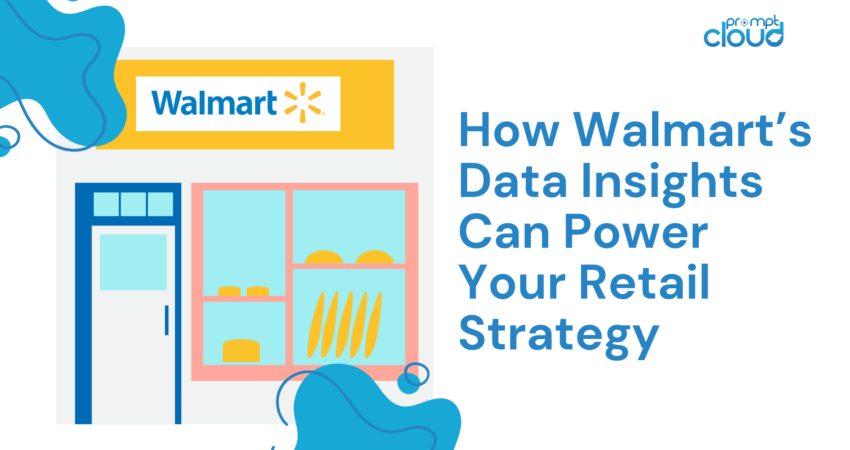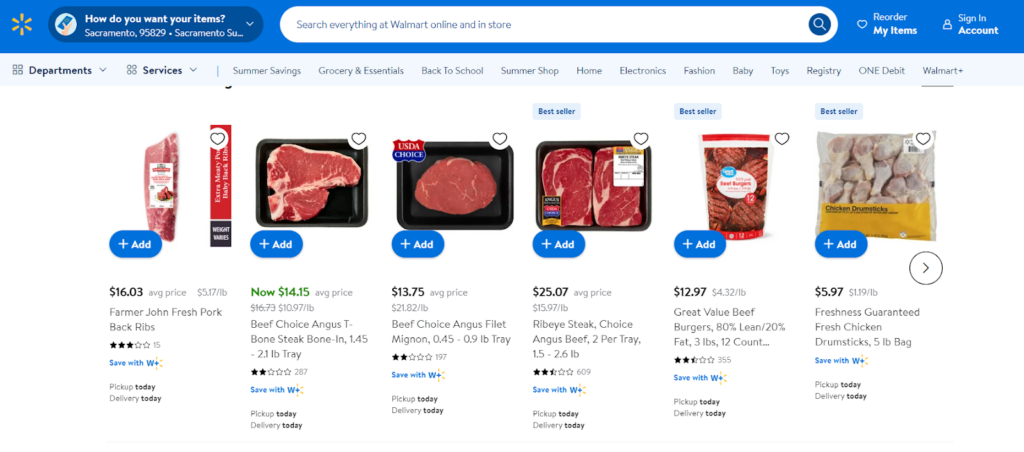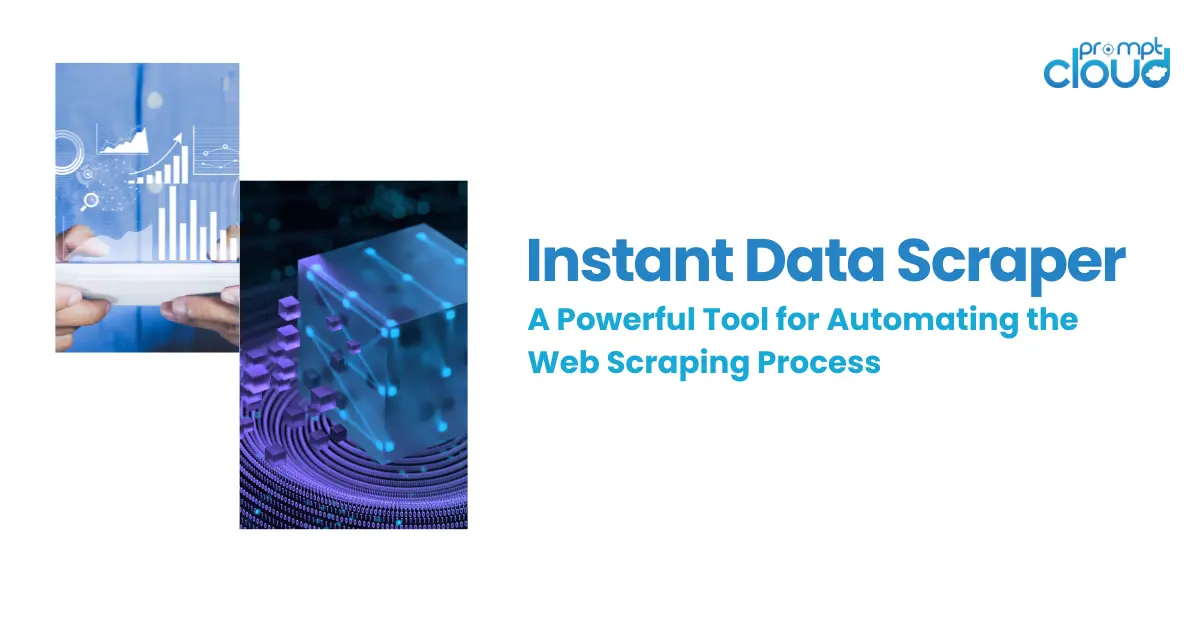
In the competitive landscape of retail, data-driven decision-making is paramount. Walmart, a global retail giant, has long leveraged data insights to optimize its operations, enhance customer experiences, and drive sales. By understanding and applying similar data strategies, you too can power your retail strategy to achieve remarkable results. Here’s how web scraping walmart can inform and transform your approach.

Image Source: Walmart
#1: Inventory Management and Optimization
In the competitive landscape of retail, data-driven decision-making is paramount. Walmart, a global retail giant, has long leveraged data insights to optimize its operations, enhance customer experiences, and drive sales. By web scraping Walmart, you too can power your retail strategy to achieve remarkable results. Here’s how Walmart’s data insights can inform and transform your approach.
Walmart uses advanced data analytics to manage and optimize its inventory. By predicting demand with remarkable accuracy, Walmart ensures that its shelves are stocked with the right products at the right time, minimizing stockouts and overstock situations. This approach not only reduces costs but also enhances customer satisfaction by ensuring that customers find what they need when they need it.
How Walmart Does It:
- Predictive Analytics: Walmart leverages predictive analytics to forecast demand for various products. This involves analyzing historical sales data, seasonal trends, and external factors such as weather patterns and economic conditions. By doing so, Walmart can anticipate demand fluctuations and adjust inventory levels accordingly.
- Real-Time Data Monitoring: With web scraping Walmart the brand utilizes real-time data from its vast network of stores and warehouses. This data is constantly monitored and analyzed to provide up-to-the-minute insights into inventory levels, sales trends, and supply chain performance. Real-time monitoring allows Walmart to respond quickly to changes in demand and supply conditions.
- Automated Replenishment: To streamline the inventory management process, Walmart uses automated replenishment systems. These systems automatically reorder products based on preset thresholds and forecasted demand, ensuring that shelves are always stocked without manual intervention. This reduces the risk of human error and improves operational efficiency.
- Supplier Collaboration: Walmart works closely with its suppliers to ensure a smooth flow of goods. Through data sharing and collaboration, suppliers can better understand Walmart’s inventory needs and adjust their production schedules accordingly. This collaboration helps in maintaining optimal inventory levels and reducing lead times.
Key Takeaways
Implement predictive analytics tools and leverage web scraping Walmart to analyze historical sales data, seasonal trends, and market demands. This will help you optimize inventory levels, reduce carrying costs, and improve customer satisfaction by ensuring product availability.
#2: Personalized Customer Experiences

Image Source: Walmart
Walmart collects vast amounts of customer data from both online and offline channels. This data is used to personalize the shopping experience, recommending products based on individual customer preferences and purchase history. By leveraging customer insights, Walmart can deliver highly personalized experiences that enhance customer satisfaction and drive loyalty.
How Walmart Does It:
- Data Collection and Integration: Walmart gathers customer data from various sources, including in-store purchases, online shopping behavior, mobile app interactions, and loyalty programs. This data is integrated into a centralized system, creating a comprehensive view of each customer’s behavior and preferences.
- Personalized Recommendations: Using advanced algorithms and machine learning models, Walmart analyzes customer data to generate personalized product recommendations. These recommendations appear across multiple channels, including the website, mobile app, and email marketing campaigns.
- Tailored Marketing Campaigns: Walmart uses customer data to design targeted marketing campaigns that resonate with specific segments. By understanding customer preferences and shopping habits, Walmart can send personalized offers, discounts, and product suggestions that are more likely to convert.
- In-Store Personalization: Walmart’s in-store personalization efforts include customized promotions and product placements based on local customer preferences. By analyzing regional data, Walmart can stock stores with products that are more likely to appeal to the local customer base.
- Customer Feedback Integration: Walmart actively collects and analyzes customer feedback from various channels, including surveys, reviews, and social media. This feedback is used to refine personalization strategies and improve overall customer experience.
Key Takeaways
Collect and analyze customer feedback to continuously refine your personalization strategies. Use customer insights to segment your audience and create tailored marketing campaigns. Personalized offers and product suggestions can significantly improve engagement and conversion rates.
#3: Dynamic Pricing Strategies
In the ever-competitive retail landscape, dynamic pricing has become a critical tool for maximizing profits and staying ahead of the competition. Walmart, a leader in retail innovation, employs dynamic pricing strategies to attract price-sensitive customers while maintaining profitability. By continuously adjusting prices based on market conditions, Walmart ensures that it remains competitive and responsive to consumer demand.
How Walmart Does It:
- Real-Time Competitor Monitoring: Walmart uses sophisticated tools to monitor competitor prices in real-time. By keeping a close eye on the pricing strategies of other retailers, Walmart can adjust its prices to remain competitive. This real-time monitoring enables Walmart to react quickly to market changes and ensure that it offers the best prices to its customers.
- Demand-Based Pricing Adjustments: Walmart leverages advanced algorithms to adjust prices based on demand fluctuations. During periods of high demand, prices may be increased to maximize profits, while during low demand, prices can be reduced to stimulate sales. This demand-based pricing ensures optimal revenue generation across different market conditions.
- Personalized Pricing Offers: Walmart uses customer data to offer personalized pricing to different segments. By analyzing purchase history and customer preferences, Walmart can provide tailored discounts and promotions that are more likely to convert. Personalized pricing helps in targeting specific customer segments effectively.
- Dynamic Price Testing: Walmart continuously tests different pricing strategies to find the optimal price points for various products. Through A/B testing and price elasticity analysis, Walmart identifies the price points that maximize sales and profitability. This iterative approach ensures that Walmart’s pricing strategy is always fine-tuned for the best results.
Key Takeaways
Implement dynamic price testing to identify the most effective price points for your products. Regularly testing and analyzing price changes can help you optimize your pricing strategy for maximum profitability. Implement real-time competitor monitoring tools to track the pricing strategies of your competitors. This allows you to adjust your prices dynamically and stay competitive in the market. Additionally, use demand forecasting models to adjust prices based on real-time demand data. Increasing prices during high demand and reducing them during low demand can help optimize revenue and inventory turnover.
#4: Customer Sentiment Analysis
Understanding customer sentiment is crucial for any business aiming to improve its products, services, and overall customer experience. Walmart, a leader in leveraging data insights, uses customer sentiment analysis to gauge customer satisfaction and identify areas for improvement. By actively listening to customer feedback across various channels, Walmart can make informed decisions that enhance customer loyalty and drive business success.
How Walmart Does It:
- Collecting Feedback Across Multiple Channels: Walmart gathers customer feedback from a variety of sources, including in-store surveys, online reviews, social media interactions, and customer service interactions through web scraping Walmart. This multi-channel approach ensures a comprehensive understanding of customer sentiments.
- Advanced Sentiment Analysis Tools: Walmart uses advanced sentiment analysis tools powered by artificial intelligence and natural language processing (NLP) to analyze customer feedback. These tools can detect positive, negative, and neutral sentiments, providing a clear picture of customer emotions and opinions.
- Real-Time Sentiment Tracking: By monitoring customer sentiment in real-time, Walmart can quickly identify emerging trends and issues. This allows the company to respond promptly to negative feedback and capitalize on positive sentiments, maintaining a positive brand image.
Key Takeaways
Use real-time sentiment tracking to stay on top of customer opinions. Respond quickly to negative feedback to mitigate potential issues and reinforce positive feedback to build brand loyalty. Collect feedback from multiple channels to get a well-rounded view of customer opinions. Utilize surveys, online reviews, social media, and direct customer interactions to gather valuable insights.
Implement sentiment analysis tools that use AI and NLP to analyze customer feedback. These tools can help you understand the underlying sentiments in customer reviews, comments, and interactions.
Conclusion
Walmart’s success is a testament to the power of data-driven strategies in retail. By adopting similar data insights and tools and web scraping Walmart data, you can enhance your retail operations, improve customer satisfaction, and drive sales growth. At PromptCloud, we specialize in web scraping and data extraction services that can provide you with the actionable insights you need to power your retail strategy.
Ready to transform your retail business with data insights? Contact Us to learn how we can help you harness the power of data.




















